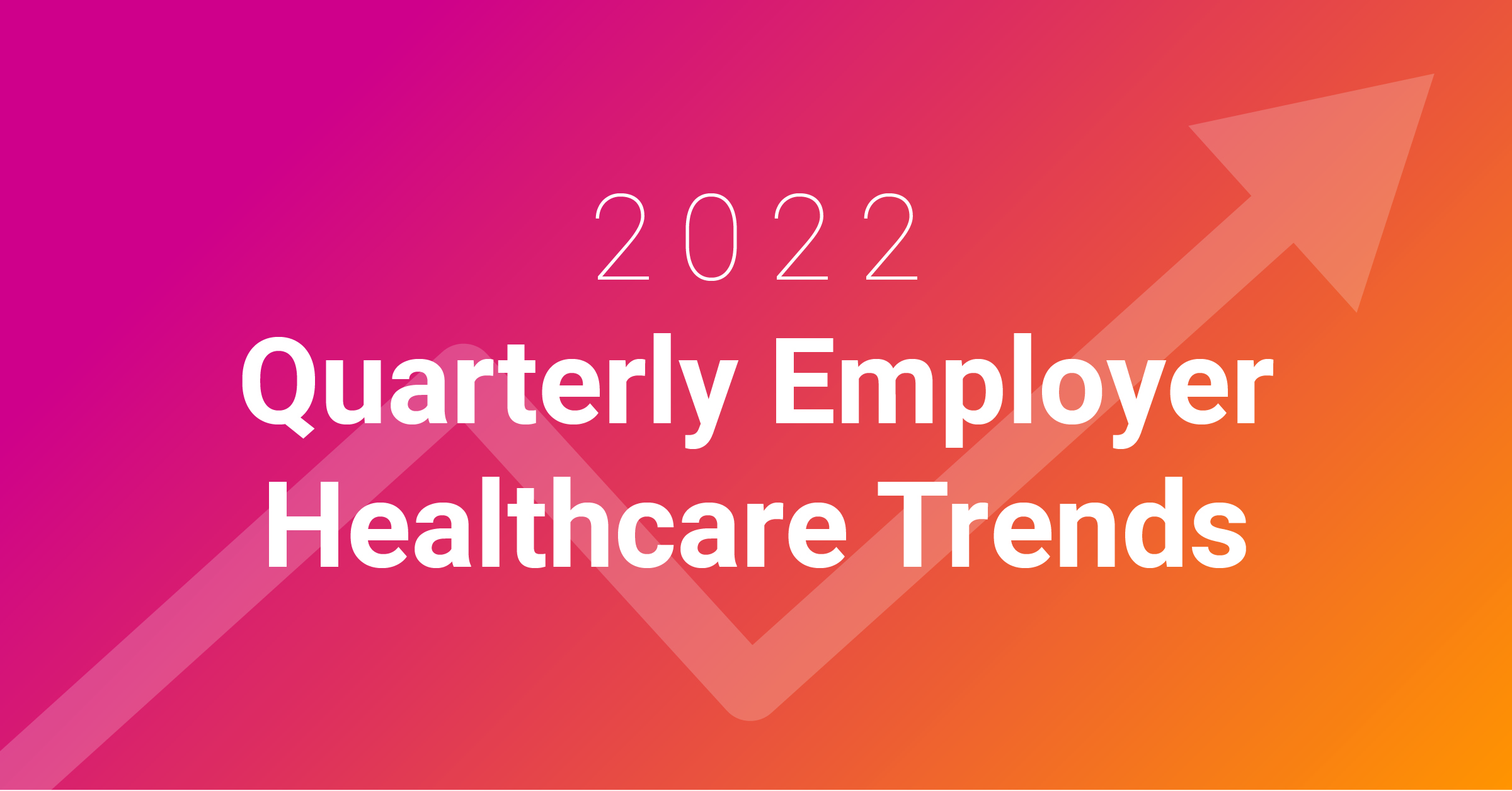While employees have adapted to new workplace norms, such as COVID protocols and an increase in the reliance on technology over the past few years, their healthcare needs have also changed. Companies continue to evaluate how to best keep employees healthy, while also keeping costs down. Here are three employer healthcare trends we are seeing in the first quarter of 2022:
Increased Emphasis on Behavioral Health for Employees
As employees continue to seek out behavioral health resources to help them manage a variety of issues, behavioral health specialists are starting to see the aftermath that the pandemic has had on their patients.
“Things are not calming down,” says Athena Vuylsteke, Behavioral Health Counselor at Marathon Health. “When it comes to emotional health, it can take months or even years to see the impacts. When people experience trauma, it can take a while for those symptoms to surface.”
As behavioral health providers work to meet the needs of employees, they’re starting to take a more integrated approach by including other providers into their patient care.
“Sometimes I have patients who are feeling depressed by weight gain or ongoing pain they’re experiencing, and that’s causing a negative impact on their life,” Vuylsteke says. “One of the advantages I have at Marathon Health is that I can call up one of our dietitians or physical therapists and work with them on creating a comprehensive care plan for that patient. It’s not just their physical or mental health, we’re treating them on every aspect of their being. Through this approach, they can achieve better health outcomes.”
Treating a patient holistically also reduces the chance of a mental health issue escalating to a physical medical condition over time.
Enhanced Virtual Care
Employee virtual care grew significantly in 2021. According to a 2021 survey released by the National Association of Worksite Health Centers (NAWHC) and Mercer, 89% of employer-sponsored health centers offered virtual care for employees. Even as people start to feel more comfortable with being out in public again, virtual care provides them with more flexibility when they’re trying to juggle things like work and childcare.
“It’s a convenience factor for a lot of working parents,” says Michelle Woodruff, Senior Director of Virtual Care Operations at Marathon Health. “If you’re in a manufacturing setting and you need to follow up regarding your diabetes or A1c, instead of having to drive into town to go see your physician, you can schedule a virtual healthcare visit to review the same data on a laptop or mobile device.”
Virtual care is also a popular option for people who are seeking behavioral health support. Some patients prefer to meet virtually because it’s more convenient and some prefer the privacy of their own home.
In-person care is still essential, however. By providing a hybrid model — that includes both virtual and traditional primary care — employees can build trusted relationships with care teams. Once that relationship is established, employees are often more comfortable sharing information regarding their health because they have the support and guidance needed to drive real outcomes.
Better Chronic Condition Management for Employees
Over half of adults in the U.S. now live with a chronic condition. Chronic conditions are defined as health conditions lasting a year or more. While some of the most common include high blood pressure and cholesterol, diabetes, asthma, and obesity; they also include behavioral health conditions like grief and trauma.
There has been a lot of discussion on how to better manage these conditions with support from healthcare providers. Healthcare teams can work with employees on behavior modification — from eating healthier to quitting smoking and increasing exercise. Because of this, employers should expect to see more of an emphasis being placed on the creation of personalized plans for employees seeking chronic care treatment.
“It’s very effective because it’s so patient-centered,” says Tamara Golden, RN, Health Coach, and Leadership Development Specialist at Marathon Health. “It’s all about what’s important to them, and as a result, they’re more likely to follow through.”
Another benefit that stems from better chronic care management is a reduction in health plan costs for employers. On average, these costs rise by more than 4% each year. According to Michael Gonzales, Executive Vice President of Growth and Strategy at Marathon Health, one of the best ways to reduce costs is through a holistic approach. “You want to keep the chronic population out of the hospital, so you want to get them on remote patient-monitoring devices, connect them with behavioral health counselors, and start them on chronic condition management programs.”
As employers look to the future, providing employees with high quality care that’s easy to access will be critical in keeping them healthy and lowering costs overall.
Jeff Wells, MD, CEO and co-founder of Marathon Health, put it best when he said it’s the human success stories from this value-based, primary care model that are truly inspiring. “It’s not uncommon for our CHRO partners to tell us providing this type of access to care is one of the five most important things they’ve done in their career — they’re helping their employees live better lives.”
Additional Resources
You might also like
Subscribe to our newsletter and stay on the cutting edge of worksite healthcare.










